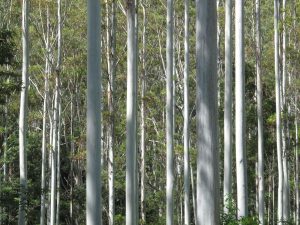
Renewable timber harvesting has resumed in New South Wales’ South Coast this week with additional environmental safeguards in place to ensure Forestry Corporation’s commitment to sustainable forest management. Source: Timberbiz
Plans are being prepared for four operations on the South Coast and Eden and these will be available on the Forestry Corp website once approved. These initial forests include Nadgee, Mogo, Yambulla and Shallow Crossing.
The Australian Forest Products Association says hundreds of NSW timber industry workers will welcome the resumption of hardwood timber harvesting operations.
AFPA CEO Mr Ross Hampton said hardwood timber mills across NSW have been starved of log deliveries for more than a year since the Black Summer bushfires and are at crisis point.
“There are hundreds of forestry-dependent jobs at stake on the South Coast if supply to timber mills does not urgently resume, so the news that modest timber harvesting levels have resumed will provide considerable relief across regional NSW,” Mr Hampton said.
Daniel Tuan, Forestry Corporation’s General Manager of Hardwood Forests, said the recommencement of harvesting would allow the timber industry on the South Coast and Eden to stay in business following the 2019-2020 bushfires and avert job losses in local communities.
As reported in February, Forestry Corporation had been working constructively with the Environment Protection Authority (EPA) for the past 16 months to negotiate site-specific operating conditions for each harvesting operation in bushfire-affected coastal forests.
But no site specific operating conditions had been issued since mid last year and the industry has exhausted its log stocks and opportunities for harvesting on private property.
As a result, renewable timber harvesting on the South Coast and Eden will take place with additional environmental safeguards to further minimise any risks to fire-affected forests and supply much-needed timber to local industry.
These new rules are above and beyond the existing Coastal Integrated Forestry Operations Approval (CIFOA), which prescribes protections for wildlife, soil and water and enables sustainable timber to be produced and the trees regrown.
The additional environmental safeguards put in place in recognition of the impacts of the 2019-2020 bushfires, include additional searching for plants and animals, retaining a greater number of hollow bearing trees and increasing the area of land to be excluded from harvesting.
“We believe these additional environmental safeguards provide the right balance which Forestry Corporation is required to strike between environmental considerations; the need to support the regional communities reliant on timber industry jobs; and meet its supply commitments with small family businesses and key local mills,” Mr Tuan said.
“We have put in place robust operating procedures to manage compliance with the additional safeguards and we will share the outcomes with the EPA. The EPA has also indicated that it will step up its oversight of our operations,” Mr Tuan said.
Mr Hampton said Forestry Corporation had done the right thing and taken on board the EPA advice to develop additional environmental safeguards that strike a balance on the environment and the need to resume supply to industry.
“The science shows that it is not an ‘either-or’ proposition – native forests managed sustainably for timber production and recreation deliver the same or better environmental outcomes as NSW’s millions of hectares of National Parks and reserves,” he said.
“I commend Forestry Corporation for taking an evidence-based approach and recognising the critical situation mills are facing.
“There are timber mills that are on the verge of running out of logs. Without this relief these mills face the grim prospect of having to stand down workers and cease production at a time of high demand of appearance-grade timber products.”
Mr Hampton urged the EPA to allow the experienced forest scientists and ecologists at FCNSW to get on with the job of sustainably managing the state’s multi-use forests.
“FCNSW only operate in regrowth timber-production forests, with only 0.2% of NSW native forests harvested annually for timber production and regenerated by law. The real environmental catastrophe would be if NSW’s sustainably-managed native timber industry closed and we relied solely on imported hardwood timber,” Mr Hampton said.
“The housing construction and renovation boom Australia is experiencing means we are seeing record demand for quality appearance-grade hardwood for products such as floorboards, decking and staircases.
“If our mills do not produce these products it means we will just increase imports from countries with weaker environmental safeguards at high risk of illegal logging and deforestation,” Mr Hampton concluded.
Harvesting operations will be conducted under the interim arrangement until the results of the review by the National Resources Commission, due later this year, are available. Forestry Corporation is actively participating in this review.
Information about the locations of Forestry Corporations operations is available at https://planportal.fcnsw.net/





